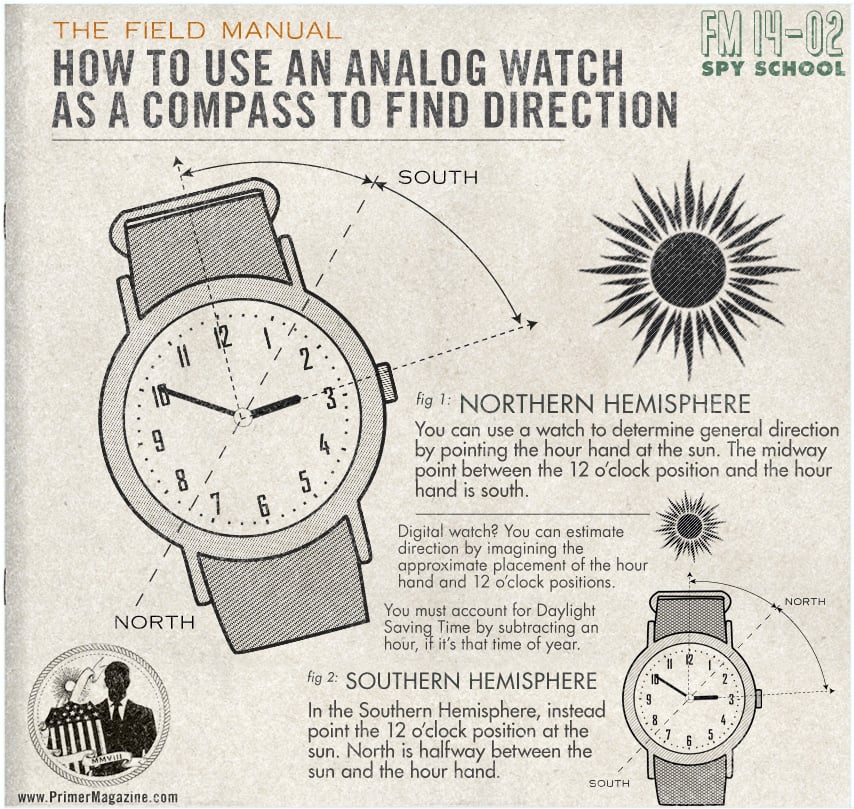Kids can’t even read a sundial nowadays, smh
This has got to be rage bait like the litterbox thing right?
Yup. Of course it is and half of the comment section is falling for it.
Litter box thing? I thought it was just my half wit town who believed in that bullshit.
This would be gen alpha at this point no?
deleted by creator
If only there was a building children could attend where they do things like teach how clocks work
We learned analogue clocks in children’s TV also
Gather round, children, time to learn how to use a dial up modem, and after that we’ll go over Morse code.
Did you not learn morse code in school…? I’m rather young and that was taught in one of my classes I’m fairly certain. Even if it was mainly for fun, and only really remembered how to do SoS
Seriously! I’m pretty sure that was part of 1st or 2nd grade. Maybe both…
The problem is unless you really use the skill a lot you’re not really gonna learn it from school. I had to teach myself how to read analog clocks in highschool cause even though I’m pretty sure I learned it in elementary school I grew up with computers and eventually smart phones so I never had to use it.
Edit: Also for context I was born in 2001
We had one in every classroom. So we only had to look at it for reinforcement of the original lesson.
We had them too but at least for me in elementary school I didn’t really care what time it was. I remember I knew what position on the clock meant school was done but other then that didn’t really need to read it cause the teachers would just bring us as a class to whatever our next class was for that day. By the time I got old enough to start caring smartphones were prevalent enough that I never really needed to learn how to read a clock. It wasn’t until highschool where teachers got more strict about enforcing no phones out in class that I then learned how to read clocks so I could know when class would be done.
In my elementary school we even had clocks, where the numbers were large dice the teacher could take out and rotate so they showed ½, 30 or 18 instead of 6, for example. It’s not hard to learn, if you’re at a school. But then again, digital clocks are so everpresent that it might not actually matter…
Pathetic.
oh look yet another warmed over “DAE the kids r bad” talking point that i’ve been hearing literally since i learned language.
Shouldnt we blame the teachers for fsiling to teach kids how to read the clock?
Brain rot is only a moral failing of the children. What more can the teachers and parents do?!
Or the schools for removing the clocks, thus preventing anyone from practicing.
Real talk, is there some benefit to an analog clock that would prevent them from all being replaced by digital ones? Being able to know exactly the time in a moment’s glance seems better to me.
They’re certainly not better looking than a digital one, considering most of the ones used in schools are just the cheapest and most basic version they can get.
Power requirements maybe? Longevity?

Can’t do that with a digital display, can you?
It literally says on the image you sent how to do it with a digital display (besides, it’s pretty reasonable)
Not if you can’t imagine analogue clock.
Their method is “imagine a clock face showing that hour” how are you going to do that if you don’t know how analogue clocks work?
It proves to be somewhat useful as an example when trying to teach fractions and decimals, something we are absolutely terrible at teaching. Incomprehension of fraction to decimal conversion is why 90% of people who say they are bad at math, say they are bad at math.
Teaching someone how to read a clock for the sole purpose of using it as a math example seems like a poor use of effort.
I wouldn’t say that’s the sole purpose, just an additional purpose to being able to tell time. It’s also useful if the kid wants to be a pilot.
So what are the purposes? Nobody uses analog clocks anymore so afaict:
- To teach fractions
- Something to do with being a pilot???
What am I missing? 😛
Clockwise, counter clockwise. Classic time shorthand (IE, half past ten, quarter to eleven). Time estimations (easy to see a half minute on a analog clock, digital just goes from 2:00 to 2:01)
I think analog clock displays are more elegant, and are overall nicer than digital. Personal preference though.
Incomprehension of fraction to decimal conversion is why 90% of people who say they are bad at math, say they are bad at math
I feel called out. I was in high-school Calculus (11th grade) before I “truly” understood fractions. Like, I honestly somehow managed to make it to Calculus without knowing how to add and subtract fractions without a calculator. Thought I was dumb in math until 9th grade algebra, and didn’t start becoming a bit of a math nerd until Calculus
An analog clock is just three sets of loading bars with their ends glued together. You can tell geometrically what proportion of each division of time (day, hour, and minute) are spent and what proportion remains. You don’t even need the numbers.
If you need stopwatch-level precision, sure, a digital display is superior. But how often do you need that? Most of what I need clocks for is, “Oh, it’s about a quarter to noon, I have a lunch appointment to get to”.
It is my personal preference to visually intuit that the clock hands are roughly separating the hour into 3/4 spent and 1/4 remaining and use that to know how much time I have left to the hour, rather than read the symbols “42” on the display and manually do the mental gymnastics of “well that’s basically 45, which is three quarters of the way to 60 minutes”.
I’ll admit this benefit is marginal.
I think that’s an interesting way to look at it. I find it easier to do the mental gymnastics, as you call it.
It helps give people a geometrical understanding of the cyclic nature of time.
Lol I don’t think that’s true, and I don’t think those words work the way you used them anyway
Sounds like you just didn’t understand. Each hour of the 12 on the clock takes up 30° of the circle, and we measure time in cycles of hours, minutes, seconds that all match up well with the 360° of a circle.
Cutting pizza would also teach kids a geometrical understanding of how circles work, I don’t see how that translates at all to being innate to reading a clock. I know tons of people who can read a clock who suck at math. It seems like an incredibly weak assertion.
Making any excuse to not learn how analog clocks work is what’s really a weak assertion. It’s not that fucking hard.
Genuine question, how precise do you need the time to be? Maybe you actually need precise readings for something. I figured that “on the 5 min marker”, “slightly before/behind the 5 min marker” and “in the middle of two 5 min markers” is precise enough for me. And I I see a hand at these positions faster than reading numbers.
I think for precise readings (eg. entering the time I start working), the speed is the same for me, but obviously I didn’t test this.
I also think looking at the time but then still not knowing what time it is happens less on an analog clock.
I don’t know how much personal preference influences this though.
You can use them as a crude compass next time you find yourself unexpectedly in the wilderness.
They convey time instantly, without reading. You don’t even need the numbers for them to work. It’s like showing a progress bar versus just giving the percentage as a number.
Being able to know exactly the time in a moment’s glance seems better to me.
That seems more like a pro for analogue to me. It’s much easier with an analogue clock since you get a visual presentation of time. Whenever someone tells me a time, I have to first imagine an analogue clock to understand what that time means.
Honestly that’s just about being used to one versus the other. For me it’s basically the other way around
I prefer analogue clocks because I tend to have time blindness with ADHD, and it’s easier to see at a glance how much time is visually left in an hour or how much time is passing with an analogue clock. Just knowing that “15 min left” isn’t really as effective as being able to see a visual representation of “15 min left”, for example.
There’s probably someplace kids could go to learn about analog clocks…
A flavorflav concert?
Kids these days do absolutely still know how to read analog clocks.
Besides, they probably shouldn’t put effort into that. Those things are close to useless nowadays. It’s mostly a case of schools being conservative… but then, it’s not that much of an effort, so there are more important things to care about.
Actually, a lot don’t. I mean, like, at least fifty percent. You would be surprised. I don’t think it’s schools being conservative so much as it didn’t occur to teachers and staff that analogue clocks are frankly obsolete (I still like them). I didn’t read this article, but it sounds like that’s being corrected.
Anyways, I really respect your attitude that it’s not worth getting bent out of shape or spending a lot of time on, I think you’re right. A lot of people get precious about it or, worse, make fun of kids like they’re stupid because they haven’t wasted their time learning to read, essentially, a sundial.
If we only taught things that were “useful” then we’d be discarding half the curriculum. Stuff like history, art, and how a fucking analog clock works, is worth teaching, even if it’s not something everyone uses every day.
I’m guessing they know how, but it’s not as quick as just glancing at it. I mean fuck I’m in my 40s but that’s true for me, too.
Not sure about that. For high school math it is still quite important that students are familiar with circles and angles on circles. Analogue clocks are a gentle introduction to this.
I do know how to read an analog clock, but I dont read it subconciously, because my brain works on digital time, so I will have to look at it and then figure out what that time is if it were on a digital clock.
So if I see an analog clock I would rather look at my phone because that is just quicker than doing the conversion.
If you want to know more, look at the video Technology Connections (2?) did about it.
You failed as a teacher, volume 1
Analog clocks are like cursive, there isn’t any real world benefit so it seems like we should spend that effort on one of the many other things that schools could teach.
I feel like there’s a bit of a difficulty difference. One requires basic spacial understanding. The other requires hundreds of hours of practice to become good. Nevertheless, learning both is a good idea for different reasons. Activating your brains via fine hand coordination is a great activity for children.
As a comparison, think about how much writing chinese children have to learn in school. They don’t come out as exactly poorly educated, rather vice versa. Then again, the competetiveness in chinese schools is pretty brutal, at least if I can trust what my chinese colleagues have told me.
I shouldn’t say there is no value in learning cursive or analog clocks, I just want to say that analog/cursive is being taught in place of more valuable lessons.
They look nice. Some of them anyway, not specifically school clocks which I mentally associate with “when is this day going to fucking end?” But reading a clock is not a difficult skill that takes a long time to teach.
It’s somewhat easy to teach, but also it’s not a useful skill. If someone likes how analog clocks work, then they can learn it on their own time, since it’s easy.
on their own time
Nice
I’d like to see their faces when trying to read a binary clock.
It was the only way I could tell how much time is left, I didn’t have a phone till highschool. In school counting down the second till school was over was so crucial.









